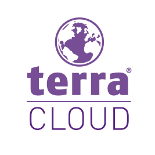Seite nicht freigegeben / Page not released
Aus TERRA CLOUD WIKI
Die ausgewählte Webseite ist nicht freigegeben.
Gerne wenden Sie sich an den Terra Cloud Support (Support@terracloud.de) um weitere Informationen zu erhalten.
The selected website is not approved.
Please contact Terra Cloud Support (Support@terracloud.de) for further information.
Zurück zur Seite Startseite.
